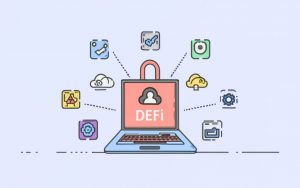Beyond Financial Returns: Measuring the True Value of Social Investments

The world seems increasingly keen on investing with a conscience. Termed as ‘impact investing’, this inclination isn’t just about money. It seeks to craft a tangible positive change in society and our environment while also filling one’s pockets. But here’s the challenge: how do we truly gauge the ripples of these “dual-purpose” financial commitments? Trusting only the numbers on financial sheets tells half the tale. Grasping the full story demands tools finely tuned to environmental, societal, and governance considerations.
Grasping the Real Worth of Heartfelt Investments
For those pouring funds into ventures that matter, gauging the all-round repercussions of their cash injections remains paramount. The usual financial documents? They often miss out on the unseen benefits, the nuances that bring about change in areas like lifting people out of poverty, building thriving communities, health, education, and keeping Mother Earth smiling.
To sharpen their decision-making prowess, these investors desperately need a robust yardstick. One that goes beyond dollars and cents, casting light on the genuine societal and environmental shifts triggered by their funds. Such profound insights not only pave the path for continued improvement but also empower investors to pit opportunities head-to-head, irrespective of where on the globe they pop up.
Impact Investing’s Meteoric Ascent: A Quick Peek
The world’s love affair with impact investing has been nothing short of a whirlwind romance. Take the words of the Global Impact Investing Network (GIIN) to heart, and you’ll learn that the cash pile dedicated to impact investing swelled to a whopping $715 billion in 2019. That’s a leap twice as big since 2017! Such growth paints a vivid picture of an increasing hunger to invest in ways that heal societal wounds, while also ensuring there’s a financial perk in it for the investor.
Who are these leading the charge? We’re talking about foundations, people managing family wealth, pension funds, institutions focused on financial development, and so many others. Their funds flow freely across the world, breathing life into endeavors like microfinance, green energy, affordable homes, and ensuring health isn’t a privilege but a right.
Navigating the Twists and Turns of Impact Measurement
One stumbling block that often sends impact investors reeling? A dearth of uniform yardsticks and methodologies for truly grasping the profound effects of their investments. In a world eager to ensure every penny counts, how do we go about getting an in-depth read on the economic, societal, and green footprints of our investments?
Yet, every cloud has a silver lining. This yearning for a better grasp of impact could very well pave the path for pioneering tools and techniques. As we refine our data harnessing prowess, the insights into the positive shifts created by investment-driven solutions to global woes grow sharper.
Decoding the True Worth of Good Deeds: A Revolutionary Approach
To unravel the mysteries behind the real value of heartfelt investments, a special compass becomes indispensable. One that could morph societal and green revolutions into numbers, fitting seamlessly into conventional financial scrutiny.
Step in, the Total Impact Valuation model. Born from the combined genius of the World Bank Group and Social Value International, this strategy fuses financial assessment, socio-economic trade-offs, and stakeholder-centric return on investment focused on societal aspects. Essentially, it crafts a full-blown map for sustainability campaigns and developmental initiatives.
Such a numeric approach empowers investors to weave in environmental, societal, and economic contemplations into their financial decisions, encouraging them to see the bigger picture.
The Weight of Social ROI: Gauging Impact’s True Essence
At the heart of this comprehensive valuation strategy lies the Social Return on Investment (SROI) analysis, a guiding light crafted in the 1990s. It’s all about viewing value through the lens of the people it affects.
Here’s how it unfolds: Engage deeply with stakeholders, unearthing the green and societal ripples. Next, assign a financial avatar to these effects, culminating in the SROI ratio. Imagine, a 3:1 ratio paints a picture where every dollar pumped in crafts societal value worth three times as much.
SROI paints in vivid colors, translating initiatives like jobs, housing, and health services into tangible numbers, allowing investors to effortlessly weave in societal and environmental considerations into their financial decisions.
A Comparison of Financial and Social Returns on Investment
| Financial Return Metrics | Social Return Metrics |
|---|---|
| Internal Rate of Return (IRR) | Social Return on Investment (SROI) ratio |
| Return on Investment (ROI) | Jobs created |
| Earnings per share (EPS) | Affordable housing units built |
| Revenue growth | Patients treated/lives saved |
| Net income | GHG emissions reduced |
| Profit margin | Small businesses incubated |
Delving Deeper than Mere Finances: ESG’s Significance in Assessing Investments
In the realm of sustainable investment scrutiny, Environmental, social, and governance (ESG) elements emerge supremely important. ESG indicators profoundly enlighten us about ethical and sustainable practices upheld by firms and endeavors.
Delve into ESG parameters, and you’ll uncover tales of resource frugality, carbon traces, worker treatment, board heterogeneity, clear dealings, stakeholder involvement, and bonds with communities. Impact financiers, while evaluating such facets, can sharply discern potential pitfalls, how assets get overseen, and whether their principles find resonance.
Increasingly, mainstream financiers discern ESG’s prowess not just as a mirror to managerial adeptness but also a harbinger of prolonged value genesis.
Financial Scrutiny’s Bounds: Pondering Beyond Just Digits
Indeed, monetary yields remain pivotal in all investment undertakings. Yet, a sole reliance on them presents pitfalls:
- Such focus glosses over intangibles: societal boons, resilient communities, and poverty mitigation, rendering insights somewhat skewed.
- An undue weight on immediate fiscal figures blinds us to prospective hazards. Think of unaccounted climatic repercussions.
- Critical aspects of governance and long-lasting performance, deeply enmeshed in sustainability, get sidelined.
- Ethical facets pivotal for numerous investors’ visions remain overlooked.
For astute choices, financiers ought to embrace a panoramic view: ESG facets married with rigorously computed societal ramifications.
Advancing the Enterprise Rationale for Gauging Impact: Early Revelations’ Merits
Embedding impact performance assessments from inception begets strategic epiphanies, potentially honing capital distribution and outcomes as time unfolds. Establishing impact yardsticks, juxtaposing actuals against forecasts, and imbibing feedback from stakeholders cultivates a milieu of accountability, enlightenment, and enhancement.
Actively assessing and steering impact sheds light on effective strategies, pitfalls, and paves ways for recalibrating endeavors for maximal societal worth. Such illumination, early on, can deftly fine-tune societal financial forays.
Tech’s Role in Gauging Impact: The Bright and Dark Sides
Digital breakthroughs proffer ingenious means to amass, dissect, and disclose non-monetary performance specifics indispensable for impact computation and orchestration. Key tools include:
- Blockchain fortifies transparency while tracing the repercussions of investments.
- Big Data sleuthing lets us sift through colossal ESG data pools, unearthing underlying links and trends.
- Machine learning bolsters impact prognosis and prescient analysis, refining capital allocation.
- Remote sensing fetches spatial, hyper-specific environmental insights, vital for sustainability oversight.
- Cellphones, meanwhile, enable instantaneous social performance data harvesting via polls and textual exchanges.
Yet, roadblocks persist: data voids in nascent markets, a dearth of sectoral norms, and expertise constraints. Persistent creativity and capacity enhancement remain indispensable for harnessing technology’s full might for future-ready impact acumen.
Championing Impact Measurement: Wisdom from the Vanguard
Pioneering impact financiers fervently champion and exemplify select commendable practices:
- Measurement alignment with investor and recipient priorities: What undergoes scrutiny heavily influences allocations. Hence, metrics ought to be intrinsically linked with stakeholder principles and envisioned repercussions.
- Establishing clear targets for outputs, consequences, and impacts: Impact hypotheses, coupled with investment logic models, should elucidate quantifiable short-span and extended societal and ecological objectives.
- Robust application of methodologies: Savants emphasize rigorous scrutiny anchored to plausible change theories, necessitating stakeholder interplay, firsthand studies, and autonomous validation.
- Unveiling methodologies: Transparently broadcasting how impacts get measured, ensuing findings, and gleaning insights cultivates responsibility, synergies, and sectoral growth.
- Continuous stakeholder dialogue: Consistent beneficiary feedback fosters metric relevance aligned with ground realities, guiding measurement refinements.
Narratives of Triumph: Illuminating Impact Measurement Episodes
Root Capital: A vanguard in agricultural finance, employing an SROI blueprint that amalgamates farmer feedback on revenue shifts. Such insights astutely guide capital allocation strategies.
Acumen: A global altruistic financier monitoring indicators such as lives impacted, employment genesis, and green energy delivery. They unabashedly endorse a streamlined data strategy to alleviate reporting strain on portfolio ventures.
Tideline: Consultancy titan proffering autonomous impact measurement and orchestration solutions. They’ve crafted a metrics blueprint for the Xylem Watermark Fund, honing in on water and sanitation repercussions.
COVID Response Alliance: A multi-faceted coalition adeptly utilizing massive data for appraising COVID’s societal and fiscal repercussions across nations and populace strata. Their insights guide recovery financial endeavors.
Closing Thoughts: Gazing Ahead at Conscious Capital Ventures and Impact Gauging
An undeniable surge propels conscious capital ventures, buoyed by escalating global affluence, awakened consumer choices and an age of digital transparency. And yet, rigorous impact assessment poses as a formidable hurdle. Crafting methodologies that weave together monetary, ESG, and societal worth metrics becomes paramount in channeling funds more adeptly toward sustainable progress.
As we hone frameworks, norms, and digital tools, we dream of a horizon where impact reflections get intricately woven into every financial and entrepreneurial move. Private funds, in light of the COVID turmoil, have profoundly underscored their societal essence.
In essence, the collective aspiration circles around an economic landscape catering holistically for humanity and our precious Earth. Persistently innovating tools will be pivotal in steering our resources towards this envisioned tomorrow.
Dive into socialmarketing90.com, and there lies a treasure trove: the latest scoops on emerging social platforms, fresh product functionalities, discerning evaluations of social media orchestration software, and comprehensive guidance on pristine strategies for both organic and sponsored social engagements. Covering vast terrain from Facebook, Instagram, Twitter, and LinkedIn to YouTube, Pinterest, and even budding stars like TikTok. If nurturing your unique brand, rallying support around a mission, or orchestrating social promotional blitzes resonates with your goals, look no further than socialmarketing90. Enriched by the expertise of seasoned social media mavens and marketing gurus, this portal offers pragmatic wisdom and pointers to propel any social avatar skyward.
FAQs
Q: Could you shed some light on present-day shortcomings in measuring impact?
A: At the heart of the matter, issues like data voids, divergent methodologies, absent sector norms, and exaggerated claims by certain participants stand out. Indeed, gauging impact hasn’t reached perfection yet.
Q: Who stands at the forefront in this realm of impact investing?
A: Among the luminaries, you’d find development fiscal bodies, charitable foundations, lineage-controlled funds, retirement reserve pools, merchant banking entities with specialized impact wings, asset curators, and syndicates of private backers.
Q: Can you illustrate some societal impact indicators?
A: Imagine markers touching on dimensions such as pocket-friendly housing, gateway to medical care, nurturing budding ventures, fostering sustainable job avenues, uplifting marginalized demographics, knowledge enhancement initiatives, community-centric services, among others.
Q: How does impact gauging entwine with the act of investing?
A: Precise impact parameters play a pivotal role during both pre-investment sifting and in-depth study. Once funds are deployed, tracking this impact against initial estimates becomes routine. Insights from these indicators find their way into overarching portfolio strategies, supervisory mechanisms and strategies for disengagement.
Q: Could you articulate the role of ESG particulars in the broader impact picture?
A: Delving deep into environmental, societal, and governance (ESG) nuances offers invaluable pointers towards understanding impact. Yet, focusing solely on ESG might not echo wider societal or financial ramifications.
Q: Are there esteemed certifications or norms for impact measurement?
A: You might want to turn your gaze towards standards like IRIS (under the aegis of Global Impact Investing Network), GIIRS (spearheaded by B-Lab), SASB (from the stables of Value Reporting Foundation), alongside niche frameworks such as LEED, vouching for eco-friendly architectural wonders.
Q: How might technological advancements bolster impact assessment?
A: Futuristic tools encompassing blockchain, aerial observation techniques, expansive data scrutiny, algorithm-driven learning, and handheld devices usher in avenues to amplify efficiency in impact data sourcing, scrutiny, oversight, and articulation.
Q: For an investor thirsty for enhancement in impact gauging, where might one quench this thirst?
A: Institutions like GIIN, GSG, B-Lab, EVPA, ANDE, and IFC stand as beacons, offering norms, instruments, skill-enhancement sessions and pioneering perspectives to foster proficiency in impact assessment and steering.
Javier Niskanen is a crypto investor who is passionate about helping others achieve success. He has a background in computer science and has been involved in the crypto world since early 2017. Javier is excited to see how blockchain technology will change the world for the better.







